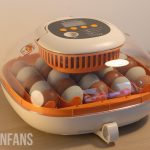5 Reasons Why Your Chicken Won’t Eat Pellets
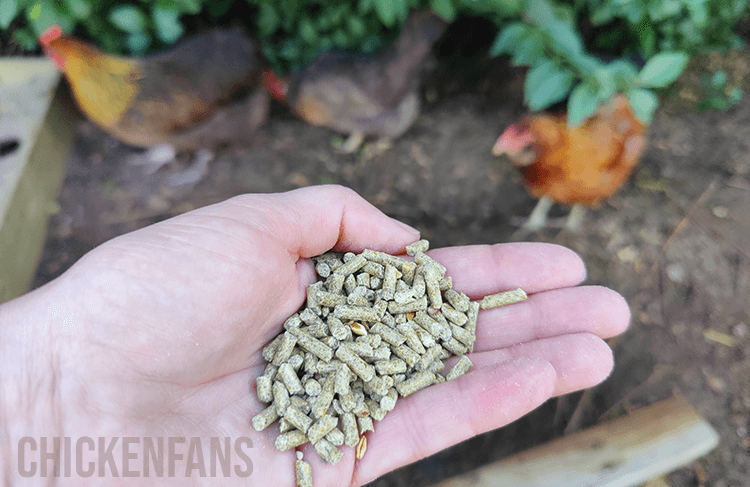
It’s a common problem for many chicken keepers: filling the chicken feeder with high-quality pellet feed, only to notice that your birds haven’t touched it the next day. Quite frustrating as your chickens are pretty good at acting like they’re starving to death even though plenty of pellets are available.
Why won’t your chickens eat pellet feed? And is there anything you can do to get them used to eat pellets?
Let’s address five reasons why your chicken won’t eat pellets.
Why aren’t my chickens eating pellet feed?
- Most chickens prefer crumble or mash feed
- Too many treats during the day
- Free-ranging chickens won’t need as much extra feed
- Moldy pellets aren’t appetizing
- Loss of appetite caused by health issues
Chickens prefer crumble or mash feed
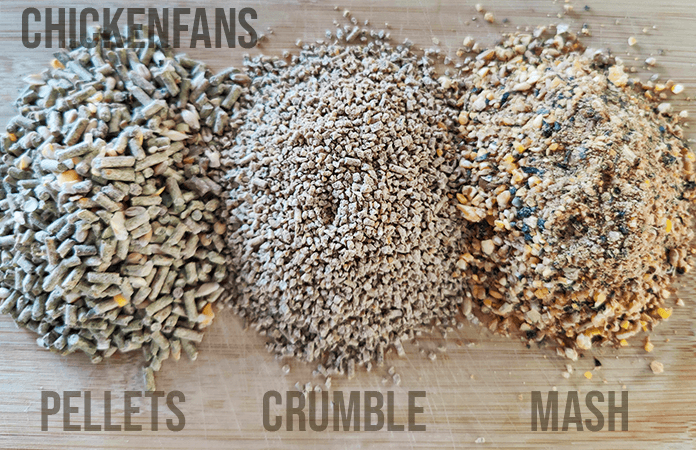
There is no difference in nutritional value between pellets, crumble or mash feed. These terms refer to the size of the feed. Although they have the same nutritional value (apart from differences in quality in different brands), chickens tend to like the consistency and size of mash and crumble feed more than large pellets.
If chickens get to choose, they’ll eat anything apart from the pellets. Crumble and mash taste the same but have a nicer texture. Grains and corn feed is their favorite due to their taste. It’s essential to let them adjust to eating pellet feed before switching back to crumble or corn. They won’t starve to death; if your chickens are hungry and no other food is available, they’ll eat the pellets.
How to make them adjust to pellet feed is up to you. You can take all other feed away, stop giving them treats and solely provide pellets. Cold turkey, as you may call it. Your chickens may go on a hunger strike for some time, but eventually, they’ll give up and eat the pellets.
A softer way to handle the issue is to mix pellet feed with their regular feed, although your chickens are smart enough to toss out the pellets and only eat the other feed. Or try and moisten the pellets before giving them to your chickens; it changes the consistency and makes it more pleasant to eat.
Too many treats during the day
If we were given a choice between strawberries and champagne or dry bread and water, we’d know which one to choose! The same goes for your chickens; they love treats; it’s like chicken candy. But treats are not a good food source.
Treats and kitchen leftovers don’t have enough nutritional value for your chickens to stay healthy and happy. It’ll make them obese and more likely to catch infections. Never feed your chickens leftovers high in salt or fat, nor give them any of the following: uncooked potatoes, chocolate, citrus fruits, onions,…
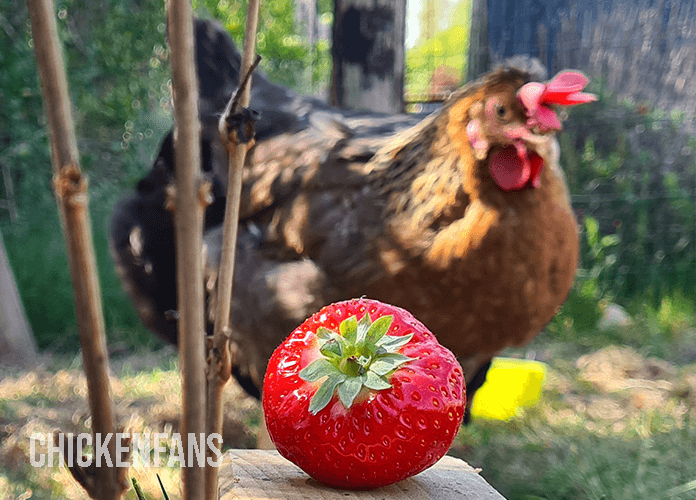
The ground rule is: don’t exaggerate. Never feed your chickens more than 10% of their total feed of the day in snacks. If you want to get them started on pellet feed, they refuse to eat, stop giving any treats until your chickens start eating the pellets.
Free-ranging chickens won’t need as much extra feed
Let’s get something straight. With access to plenty of fresh water and free-ranging chickens, they don’t need to be commercially fed daily. Especially during summer, when there are plenty of bugs and plants to eat, they’ll be scratching and foraging all day and find plenty to eat. Chickens are self-sufficient animals that search for their own food when no commercial food mix is available or when they’re not fond of the feed you give them.
As said before, if chickens get to choose, they’ll eat anything apart from pellets. So if pellets are their only commercial food source, they’ll look for other food while free-ranging. But this doesn’t mean they are well-nourished as they won’t get all nutrients from a free-ranging diet. Chickens are great foragers, but you shouldn’t rely on this ability for their overall health.
Keep pellet feed available so your chickens can eat more nutritional food while foraging. If they don’t seem to like pellets, soak them in warm water so it has a nicer consistency for them to eat.
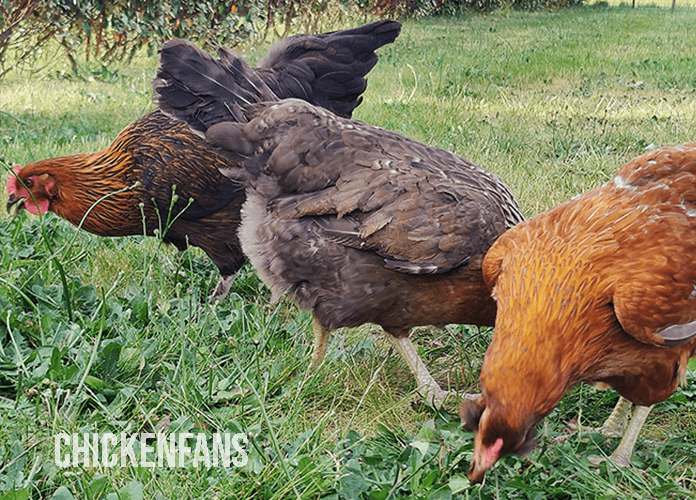
Moldy pellets aren’t appetizing
Moldy or rotten food is as bad for your chickens as it is for us. It can make them sick as mold is a fungus. Especially during damp weather, protect your animal feed from getting moist, and always check the expiration date on the bag. Replace your chicken feed daily so it doesn’t start to rot in the feeder.
Moldy pellets don’t taste good, so your chickens won’t like eating them. You must reconsider your feed storage practices to prevent rotten or moldy feed.
- Know that moisture is the enemy!
- Store chicken feed in an airtight container
- Store chicken feed in a dry, cool location protected from other animals
- Store chicken feed away from direct sunlight
- Check the expiration date on the bag of feed
Loss of appetite caused by health issues
If your chickens never had any problems with pellet food and stopped eating properly or losing weight for an unknown reason, it’s a good idea to rule out some health issues. Parasite infestations like lice or red mites are common in chickens and are known to cause a loss in appetite and an overall unhealthy look.
The major problem is that numerous health issues can cause loss of appetite. When there are no other significant symptoms, it’s looking for a needle in a haystack. Weight loss or loss of appetite can be a sign of intestinal parasites, roundworm infections, egg binding, Chronic respiratory disease, Canker, Fowl Cholera, Fowl Pox, Infectious Coryza, and many more.
Always consult a vet when your chicken is losing weight and has stopped eating for no apparent reason. To protect your farm or homestead and the birds from all disease-causing organisms, you must take biosecurity measures inside and outside the chicken run.
What feed to choose? Mash, crumble or pellet?
With so many different chicken feeds on the market, it can be hard to determine which is best for your flock. As said before, they all have the same nutritional value, so purely seen from a health point of view, it doesn’t matter which one to choose. But that does not mean there are no differences at all.
Let’s find out the pros and cons of using eighter pellets, mash, or crumble feed for your birds.
Pellets
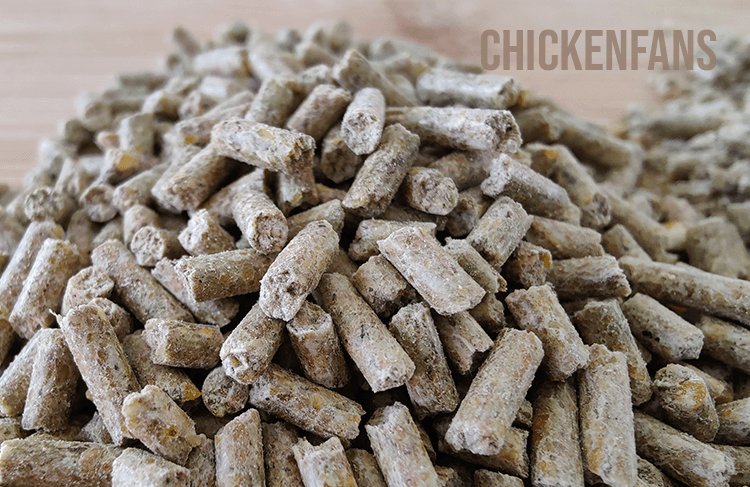
Pellets are the most common chicken feed available. They are tiny cylinders packed with chicken feed. Pellets are relatively large, so they are most commonly used in adult chickens. Because pellets hold their shape nicely, they are not spilled as much as smaller chicken feed, and their consistency makes them easy to store.
Pros:
- Less waste due to no spillage
- Easy to store
- Complete chicken feed
Cons:
- Bigger pieces are harder to swallow
- Chickens need to adjust to the large size
Crumble
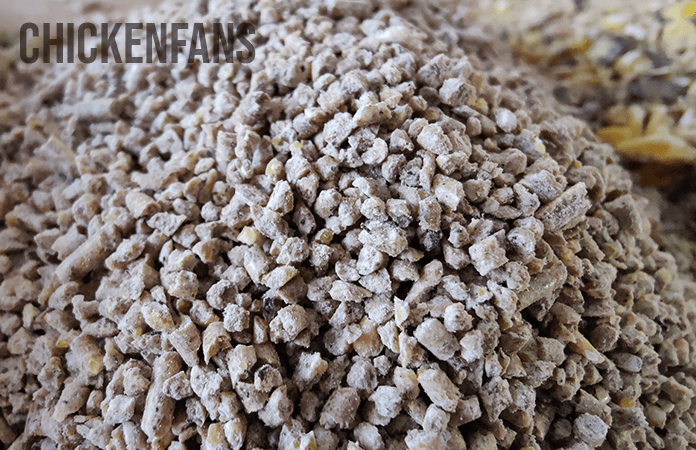
Crumble is less compact than pellets but has larger pieces than mash. Its size can be compared with larger pieces of oatmeal. Crumble can be used to let your chickens adjust to larger chunks of chicken food if you don’t want them to change from mash to pellets at once.
Pros:
- Nicer consistency
- Easy to swallow
- Complete chicken feed
Cons:
- More of a mess
Mash
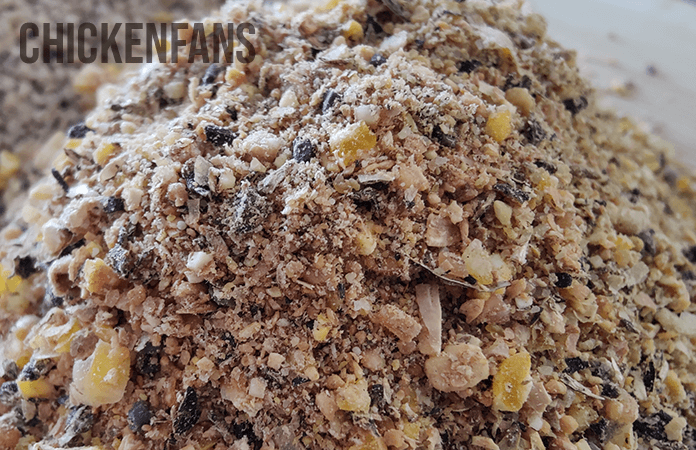
Mash is the finest chicken feed available on the market and has the feel of pottery soil. It’s commonly used for pullets, and younger birds as the pieces are easy to swallow and digest. Many chicken keepers switch to pellets when their chickens reach adulthood because of the mess mash makes if chickens knock over their feeder. However, mash can be eaten by both adult chickens and chicks as it’s a complete food source.
Pros:
- Easy to swallow
- Easy to digest
- Nice consistency
- Complete chicken feed
Cons:
- Makes a mess in the run
- Less easy to store
Summary
If you want your chickens to start on pellet feed, but they won’t touch it, there are a couple of factors to keep in mind. First, chickens need to get used to the larger pellets; they will always prefer crumble or mash feed over pellets. Stop giving them treats for some time, so their only food source is pellets.
When free-ranging your chickens, remember they don’t need as much commercial food as non-free-ranging chickens. Check your feed regularly for mold and replace the feed daily. A health check-up is necessary if your chicken still won’t eat and is starting to lose weight.
If you want to learn more about chicken feed, please consult our ‘Chicken Food Page‘ to go and see every specific food article we address, including all articles on what chickens can and can not eat. Or go to our listicle food summary on ‘The Classroom‘.




